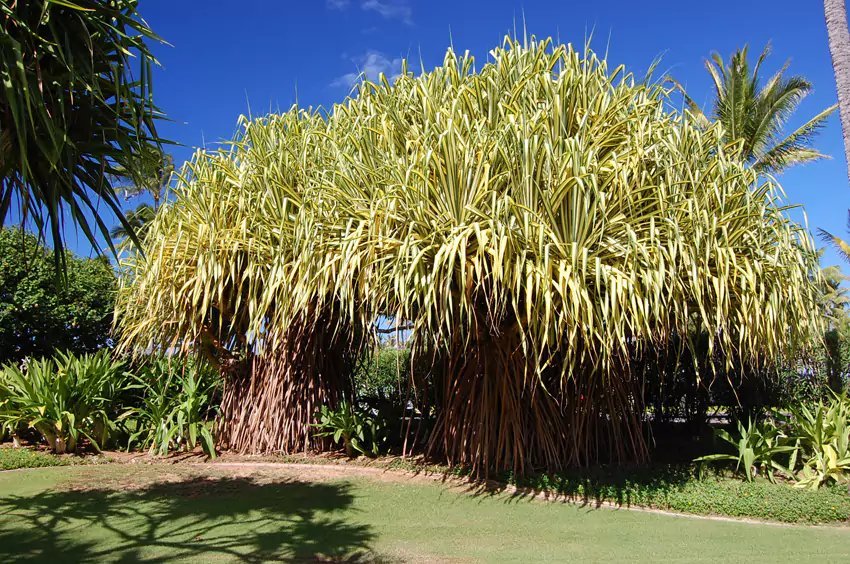Hala Tree

Hala Tree Overview
The hala tree is also referred to as screwpine and grows from sea level up to an elevation of 2,000 feet (610 m). It is a common sight in Hawaii's coastal regions (especially on the islands' windward coasts). Male flowers are fragrant and small, arranged in drooping clusters about 1-2 feet (30-60 cm) long. Female flowers produce a large fruit that looks almost like a pineapple. Male hala trunks are hard and solid while female trunks are soft inside.
The ancient Hawaiians used hala leaves (lau hala) to make baskets, mats, hats, sandals and in construction, for example to make roofs. Lau hala roofs can last up to 15 years while roofs made from coconut leaves usually last just 3 years. The trees fruit can be eaten, but was consumed usually only during times of famine.
Frequently Asked Questions
Does the fruit of the hala tree look like a pineapple?
Yes, the female hala tree produces a large, segmented fruit that resembles a pineapple, though it is not related botanically.
Where do hala trees typically grow in Hawaii?
Hala trees thrive in coastal areas, especially along Hawaii's windward shores from sea level up to about 2,000 feet (610 m).
What were lau hala leaves traditionally used for?
Ancient Hawaiians used lau hala to make mats, baskets, hats, sandals and long-lasting roofing material for homes and temples.
Do hala trees have male and female forms?
Yes, male hala trees produce fragrant drooping flowers, while female trees grow fruit. Their trunks also differ in structure.
Is the hala fruit edible?
While technically edible, hala fruit was usually only eaten during famine. It was not a preferred food in ancient Hawaii.








